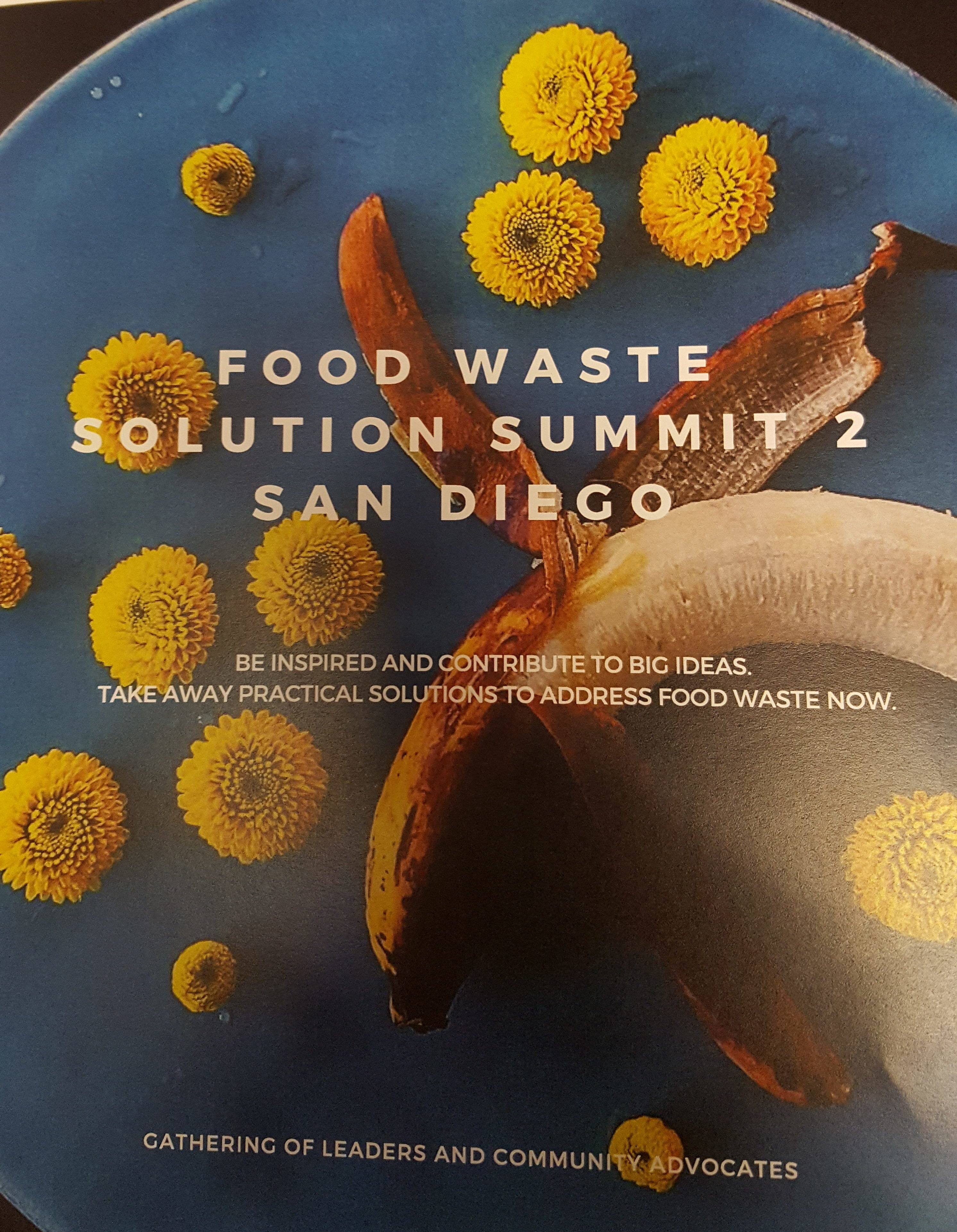This past week we attended the San Diego Food Waste Solution Summit hosted by the San Diego Food System Alliance. It was an incredibly inspiring day with like minded people in our community seeking to reduce food waste in our community. We wanted to share some information with you, our faithful readers.
Did you know?
- 600,000 tons of food is wasted (i.e. goes in the garbage) every year in San Diego alone?
- Of that 600,000 tons, the top sources of waste are homes (39%) and restaurants (22%) – a total of 61% of food waste
- Each person wastes an average of 290 pounds per year.
- There is a law that protects you when you donate your unused food!
We have a few barriers when we discuss reducing food waste.
We live in a culture of abundance – abundance is a reflection of prosperity, and who does not want to be prosperous? We must change the way we think about portion sizes and over serving. I for one have a tendency to wait until I’m really hungry to eat, which can result in over serving. Choosing things that make great leftovers can be helpful here. Utilizing smaller plates is another idea.
What do we do with all the food waste? – this is a major problem that we don’t have a complete solution for at this time, but we are working toward it. A mass food composting facility is available in the Otay area, where food waste from facilities can be taken. The rest goes in the dump and decomposes, creating methane gas.
How do we reduce food waste? – there are a number of ways we can reduce our waste substantially.
Source reduction – basically, don’t over buy. Whether you are a grocer, chef, or individual don’t buy more than you can sell or use before it spoils. Order more frequently so you are ordering only what you need. Companies that have focused on this have been able to reduce their waste by 10-30% right out of the gate. This method can save you thousands in up front food costs.
Portion control – human nature is to “fill it up”. If you give us big plates, large containers, or cafeteria trays, we will fill them. Get rid of the trays or reduce their size. Make plates and containers smaller, and train staff to control serving portions. Facilities that have done this have reduced waste 30-50%.
Donate the leftovers – whether it’s from your company picnic, corporate event, industry event, or daily meals served at your facility – you can donate the edible food to local needy. One of the best things I learned in this conference is that protects you the there is a law that protects the individual or the company from being sued when you donate unused food. Feeding America can help you get this set up at your facility or for a one time or occasional special event. You also get a tax deduction for donated food. You can’t lose!
Food for animals – a local farm may be able to use your leftovers to feed livestock.
Food for the soil – Compost. As an individual, you can reduce the waste from your home by 50-80% by composting paper, cardboard, and food waste. As a business you may fall under the new AB1826 and SB1383 laws to compost your food waste.
If you need help with reducing the food waste in your business, please give us a call!

